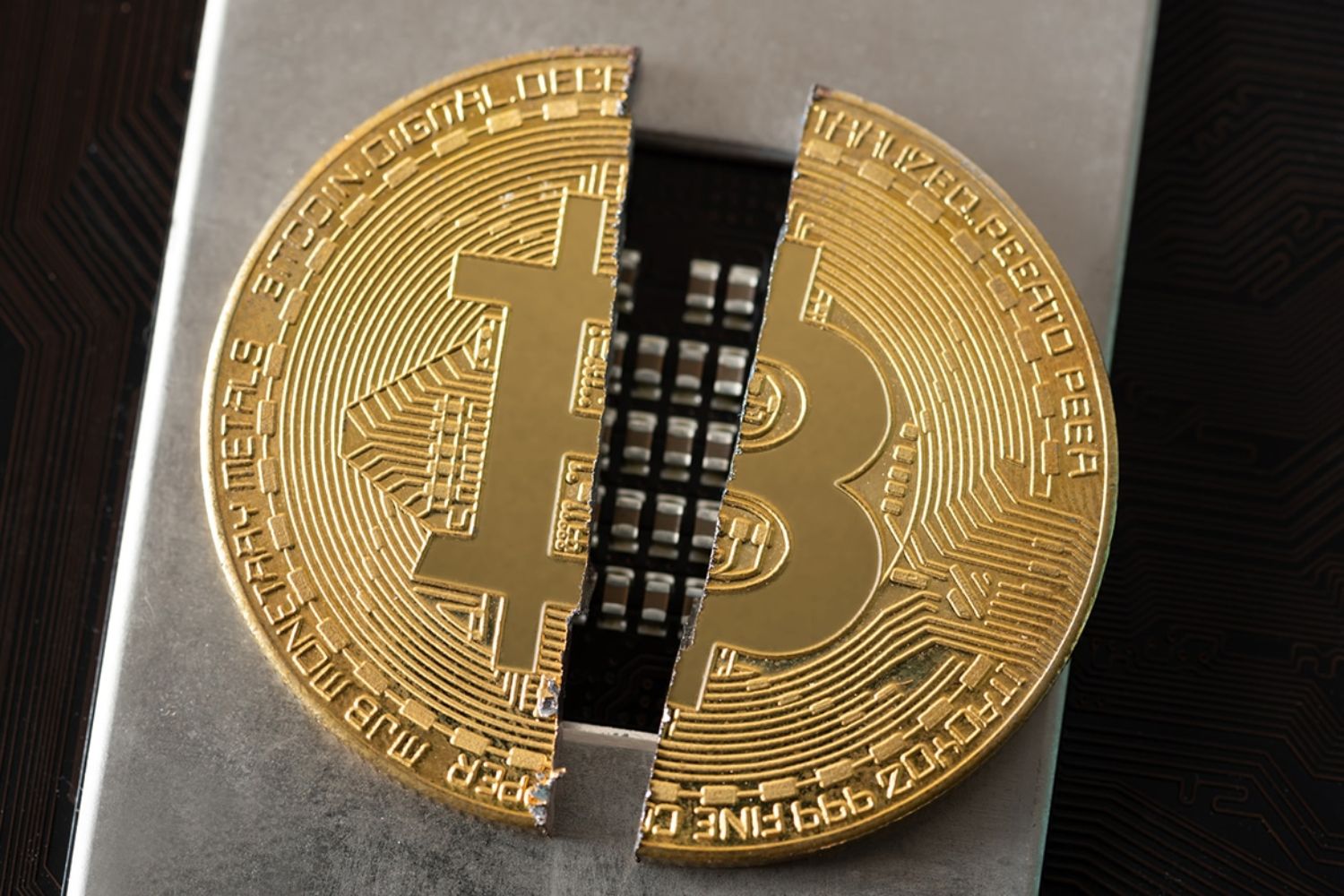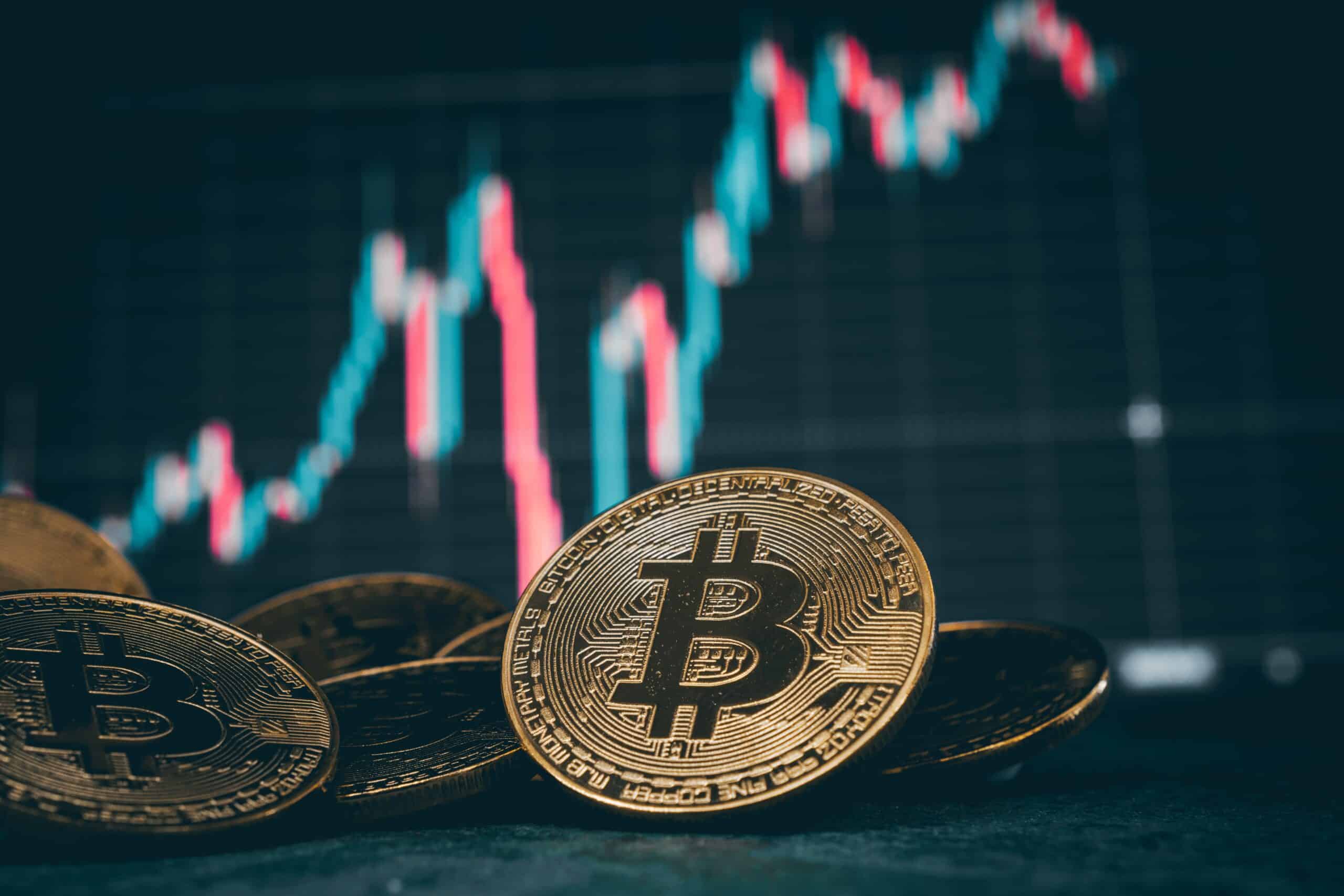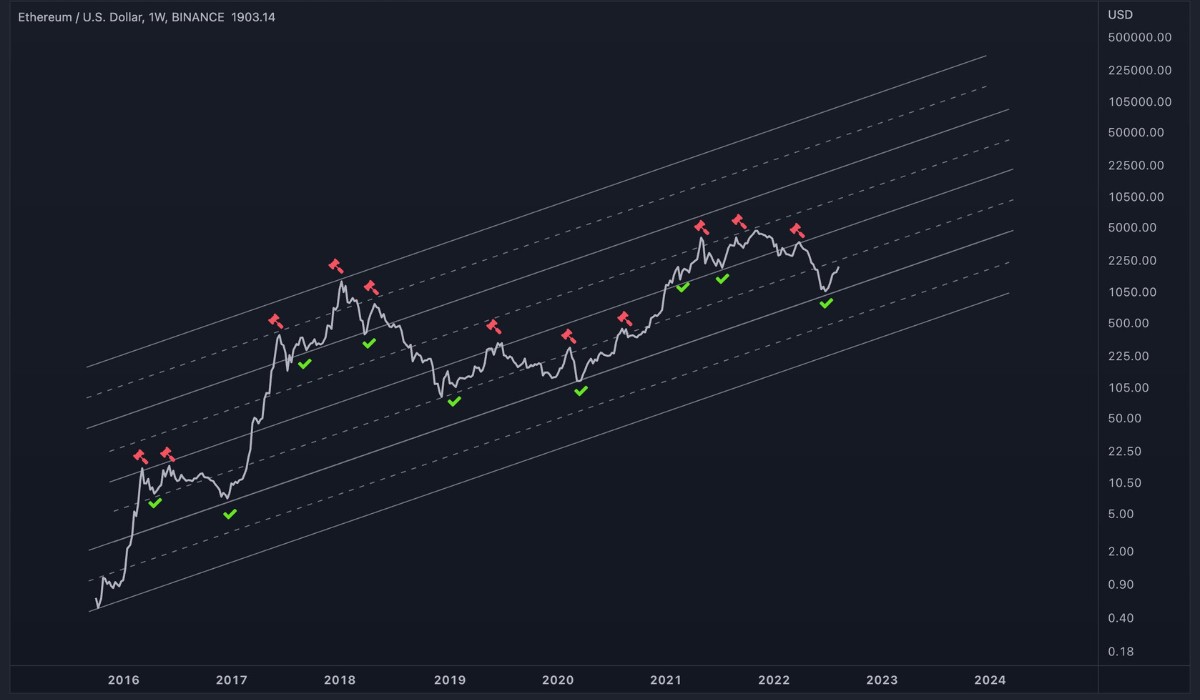Introduction
Welcome to the world of Bitcoin, where the decentralized digital currency has taken the financial industry by storm. One of the key aspects that has contributed to Bitcoin’s popularity and intrigue is its unique event called the Bitcoin halving. This event has a significant impact on the Bitcoin ecosystem, including its price, mining rewards, and overall supply. In this article, we will explore the concept of the Bitcoin halving, why it occurs, when it is expected to happen next, and how it can affect the price of this revolutionary cryptocurrency.
The Bitcoin halving is a predetermined event that occurs approximately once every four years. It is programmed into the Bitcoin protocol and is designed to control the rate at which new Bitcoins are created. This event cuts the reward that miners receive in half, hence the name “halving.” By reducing the mining rewards, Bitcoin ensures that its inflation rate decreases over time.
Since its inception in 2009, Bitcoin has undergone two previous halvings. The first halving occurred in 2012 when the block reward was reduced from 50 Bitcoins to 25 Bitcoins. The second halving took place in 2016, reducing the reward to 12.5 Bitcoins. Now, the Bitcoin community eagerly awaits the next halving, which is expected to happen in 2024.
The primary reasoning behind the Bitcoin halving is to ensure a controlled and predictable supply of the cryptocurrency. By introducing scarcity through a decreasing supply rate, Bitcoin aims to prevent hyperinflation and maintain its value over time. This deflationary nature has drawn comparisons to precious metals like gold, which also have limited supply.
As the next Bitcoin halving date approaches, there is much anticipation and speculation about its potential impact on the price. Historically, the halving events have been followed by bull markets, with the price of Bitcoin experiencing significant increases in the months and years that follow. This price surge is often attributed to the reduced supply of newly minted Bitcoins, creating scarcity and increased demand.
To prepare for the next Bitcoin halving, investors and enthusiasts should stay informed about the latest developments in the cryptocurrency market. It is essential to understand the nuances of the event and its potential implications for Bitcoin’s price and the broader market. Additionally, diversifying your investment portfolio with a balanced mix of cryptocurrencies and traditional assets can help mitigate risk and take advantage of potential market movements.
What is the Bitcoin Halving?
The Bitcoin halving, also known as the “halvening,” is an event that occurs every four years as part of the Bitcoin protocol. During this event, the block reward that miners receive for successfully mining a new block is reduced by half. Essentially, it means that the rate at which new Bitcoins are created and introduced into circulation is halved.
To understand the significance of the Bitcoin halving, it is crucial to grasp the concept of mining. Bitcoin mining is the process by which new transactions are verified and added to the blockchain, the decentralized and public ledger that records all Bitcoin transactions. Miners, who contribute their computational power to the network, solve complex mathematical puzzles to validate transactions and secure the network.
As a reward for their efforts, miners receive a certain number of Bitcoins as a block reward. This block reward serves as an incentive for miners to continue contributing their computational power to the network. However, to ensure a controlled supply of Bitcoins and prevent inflation, the Bitcoin protocol includes the halving event.
The first Bitcoin halving occurred in 2012, four years after the cryptocurrency’s creation. At that time, the block reward was reduced from 50 Bitcoins to 25 Bitcoins. The second halving took place in 2016, further reducing the block reward to 12.5 Bitcoins. The next halving, expected to occur in 2024, will decrease the block reward to 6.25 Bitcoins.
By reducing the block reward, the Bitcoin halving introduces scarcity into the system. As the rate at which new Bitcoins are introduced into circulation decreases, the available supply becomes limited. This limited supply, in turn, can lead to an increase in demand for Bitcoin, potentially driving up its price.
The Bitcoin halving is an essential aspect of the cryptocurrency’s monetary policy and economic model. With a finite supply of 21 million Bitcoins, the halving event ensures that the creation of new Bitcoins slows down over time. This deflationary nature distinguishes Bitcoin from traditional fiat currencies, which frequently experience inflation due to central bank policies.
Overall, the Bitcoin halving plays a vital role in maintaining the integrity and value of the cryptocurrency. It serves as a built-in mechanism to control the rate at which new Bitcoins are generated, providing a predictable supply schedule. This feature has contributed to Bitcoin’s reputation as a store of value and attracted the attention of investors, traders, and enthusiasts worldwide.
Why Does the Bitcoin Halving Occur?
The Bitcoin halving is a fundamental aspect of the cryptocurrency’s design and monetary policy. It is programmed to occur every four years or approximately every 210,000 blocks. But why does this event happen, and what purpose does it serve?
One of the main reasons behind the Bitcoin halving is to control the rate of new Bitcoin supply and introduce scarcity into the system. Unlike fiat currencies, which can be printed at will by central banks, Bitcoin has a finite supply set at 21 million coins. By reducing the block reward through the halving, the rate at which new Bitcoins are created slows down, ultimately leading to a limited supply.
This scarcity plays a crucial role in Bitcoin’s value proposition. The idea is that as demand for Bitcoin increases over time, the limited supply will drive up its price. This artificial scarcity has similarities to precious metals like gold, which are also limited in supply and considered valuable.
Furthermore, the halving event serves as an economic incentive mechanism. Miners, who validate transactions and maintain the security of the Bitcoin network, are rewarded with Bitcoins for their efforts. By cutting the block reward in half every four years, the protocol motivates miners to continue their work despite the decreasing rewards.
This reduction in mining rewards pushes miners to become more efficient and resourceful in their operations. It encourages them to upgrade their mining hardware, join mining pools, or seek energy-efficient solutions to maintain profitability. The increased competitiveness and optimization in the mining sector contribute to the overall security and efficiency of the Bitcoin network.
Additionally, the Bitcoin halving provides a predictable supply schedule. With the halving occurring at regular intervals, market participants can anticipate and plan for the decreasing rate of new Bitcoin issuance. This predictability adds stability to the ecosystem and allows investors and traders to factor in the halving event when making decisions.
By design, the Bitcoin halving aims to address concerns related to inflation and ensure the long-term sustainability of the cryptocurrency. It prevents the rapid influx of new coins into circulation, maintaining the scarcity and value of Bitcoin over time. This measured and predetermined reduction in supply aligns with the principles of decentralization, transparency, and decentralization that underpin the Bitcoin protocol.
Overall, the Bitcoin halving is a critical aspect of the cryptocurrency’s economic model. It promotes scarcity, motivates miners, provides a predictable supply schedule, and contributes to the long-term value proposition of Bitcoin in the global financial landscape.
When is the Next Bitcoin Halving Date?
The next anticipated Bitcoin halving is expected to occur in the year 2024. The exact date of the halving event is determined by the number of blocks added to the blockchain, which in turn depends on the speed at which miners mine new blocks. Based on the current block generation time, the estimation for the next halving is around May 2024.
To understand how this estimation is made, it is important to consider the basic principle of Bitcoin’s mining algorithm. The Bitcoin network is designed to mine a new block approximately every 10 minutes. However, the actual block generation time can vary due to factors such as mining difficulty adjustment and fluctuations in the computational power of the network.
The Bitcoin halving occurs after approximately 210,000 blocks have been added to the blockchain. Since the block time averages around 10 minutes, it takes approximately four years to reach this milestone. Each block consists of a batch of confirmed transactions, and once the 210,000-block threshold is reached, the block reward is halved.
Based on historical data, the first Bitcoin halving occurred in November 2012, approximately four years after the cryptocurrency’s launch. The second halving took place in July 2016, and if we follow the pattern, we can expect the next halving to occur around May 2024. However, it’s important to note that this estimation may be subject to slight variations due to the unpredictability of block generation time.
As the Bitcoin halving approaches, there is often increased speculation and anticipation among investors, traders, and enthusiasts. The event is seen as a significant milestone, as it has historically been followed by periods of increased interest and price appreciation for Bitcoin.
It’s important to keep in mind that while the halving event is anticipated to occur in 2024, market conditions and various external factors can influence the timing and impact of the event. Therefore, it is advised to stay informed about the latest developments in the Bitcoin ecosystem, as well as any updates or announcements regarding the next halving.
Overall, the next Bitcoin halving is expected to take place in 2024, around four years after the previous halving. The exact date will depend on various factors, such as block generation time and the level of mining activity in the network. It will be an event closely watched by the cryptocurrency community, bringing potential implications for the price and the overall Bitcoin ecosystem.
How Does the Bitcoin Halving Affect the Price?
The Bitcoin halving event has a significant impact on the price of the cryptocurrency. Although it is important to note that the relationship between the halving and the price is complex and influenced by various factors, there are several key mechanisms through which the halving tends to affect the price of Bitcoin.
1. Supply and Demand: The Bitcoin halving reduces the rate at which new Bitcoins are created and introduced into circulation. This decreased supply, combined with a constant or increasing demand, can create a supply-demand imbalance, leading to upward pressure on the price. With a limited supply and growing interest in Bitcoin, the halving event often amplifies the scarcity narrative, which can drive investors and traders to bid up the price.
2. Scarcity Narrative: The concept of scarcity plays a crucial role in Bitcoin’s value proposition. As the halving reduces the rate of new Bitcoin issuance, it reinforces the perception that Bitcoin is a scarce asset. This scarcity narrative can ignite investor confidence and increase demand for an asset that is viewed as limited in supply. As a direct result, the price of Bitcoin may experience upward movement.
3. Market Anticipation: The market often reacts to the Bitcoin halving with anticipation and speculation. Leading up to the event, investors and traders analyze historical data, market trends, and other factors to predict its potential impact. This anticipation can lead to increased buying activity as individuals seek to capitalize on potential price appreciation. The resulting demand can contribute to a positive price trend in the months leading up to and following the halving.
4. Miner Behavior: The Bitcoin halving also affects the profitability and behavior of miners. With the halving, the block reward is reduced, resulting in lower earnings for miners. This reduction in income may prompt some miners to sell a portion of their Bitcoin holdings to cover operating expenses or secure profits. Increased selling pressure from miners can temporarily suppress the price of Bitcoin. However, over time, the supply-demand dynamics mentioned earlier tend to take precedence, balancing out the market impact.
It is important to note that while the Bitcoin halving has historically been followed by positive price movements, this relationship is not guaranteed in the future. The market is influenced by various factors, including global economic conditions, regulatory developments, and investor sentiment. Additionally, the supply-demand dynamics of Bitcoin are dynamic and subject to numerous variables.
Moreover, it is crucial to recognize that price fluctuations in the cryptocurrency market can be volatile and unpredictable. While the halving event can contribute to long-term price appreciation, short-term market movements can be influenced by speculative trading and other external factors. It is always advisable to approach investment decisions with careful consideration and thorough research.
In summary, the Bitcoin halving has historically contributed to positive price movements by reducing the rate of new coin issuance, reinforcing the scarcity narrative, and creating market anticipation. However, the relationship between the halving and the price is complex, and various factors beyond the halving event itself can influence market dynamics. Understanding these dynamics can help investors and traders navigate the market and make informed decisions.
How Can You Prepare for the Next Bitcoin Halving?
The next Bitcoin halving event presents an opportunity for investors and enthusiasts to align their strategies with the potential market dynamics. While the market’s response to the halving is uncertain, there are several steps you can take to prepare and position yourself for potential opportunities that may arise.
1. Stay Informed: Keeping up with the latest news and developments in the cryptocurrency space is essential. Stay informed about the progress of the Bitcoin network, any updates regarding the halving, and market sentiment leading up to the event. This information will help you make informed decisions based on current market conditions.
2. Understand Historical Trends: Analyze the price movements and market trends that followed previous halving events. While past performance does not guarantee future results, evaluating historical data can provide valuable insights into potential patterns and market behavior around the halving. However, it is important to consider that each halving event may have unique characteristics and external factors that can influence the market differently.
3. Diversify Your Investment Portfolio: As with any investment, diversification is key to managing risk. Consider diversifying your investment portfolio to include a mix of cryptocurrencies, as well as traditional assets. This diversification can help balance potential risks and take advantage of different investment opportunities that may arise before, during, and after the halving event.
4. Consider Long-Term Investment Strategies: The Bitcoin halving event tends to have a long-term impact on the price. If you are looking to invest in Bitcoin, consider adopting a long-term investment strategy that focuses on the fundamentals and the potential of the cryptocurrency beyond the immediate effects of the halving. Evaluating the technology, adoption rate, and market demand can help guide your investment decisions.
5. Manage Your Risk: It is crucial to evaluate and understand your risk tolerance before investing in cryptocurrencies. The volatility of the cryptocurrency market can be high, and price fluctuations can occur rapidly. Consider diversifying your investments, setting clear investment goals, and implementing risk management strategies such as stop-loss orders or dollar-cost averaging to mitigate potential losses.
6. Seek Professional Advice: If you are new to investing in cryptocurrencies or feel uncertain about navigating the market around the halving, consider seeking professional advice. Consulting with a qualified financial advisor or cryptocurrency expert can provide valuable insights and guidance tailored to your specific investment goals and risk tolerance.
7. Use Reliable Exchanges and Wallets: Ensure that you are using reputable cryptocurrency exchanges and wallets to safeguard your digital assets. Research and choose platforms that offer secure storage, reliable trading infrastructure, and transparent fee structures. Protect your investment by implementing proper security measures, such as enabling two-factor authentication and keeping your private keys safe.
As with any investment, it’s crucial to conduct your own research and make decisions based on your individual circumstances and risk tolerance. The Bitcoin halving presents an intriguing event for the cryptocurrency market, but it’s important to approach it with a well-informed and balanced perspective.
By staying informed, understanding historical trends, diversifying your portfolio, adopting long-term strategies, managing risk, seeking professional advice when necessary, and using reliable platforms, you can better position yourself for potential opportunities and navigate the market dynamics surrounding the next Bitcoin halving.
Conclusion
The Bitcoin halving is a highly anticipated event in the cryptocurrency world. As the next halving approaches, it is essential to understand its significance and potential impact. The halving reduces the rate at which new Bitcoins are created, introducing scarcity into the system and influencing supply-demand dynamics.
Historically, the Bitcoin halving has been followed by periods of increased interest and price appreciation. However, it is important to approach the halving with caution, recognizing that market movements are influenced by various factors and can be unpredictable. While the halving event may create potential opportunities, it is essential to conduct thorough research, manage risk, and diversify investments.
To prepare for the next Bitcoin halving, stay informed about developments in the cryptocurrency market. Understand the historical trends surrounding previous halvings and analyze market sentiment leading up to the event. Evaluate your risk tolerance and consider diversifying your investment portfolio to manage potential risks and take advantage of different opportunities.
It is important to adopt a long-term investment strategy that focuses on the fundamentals of Bitcoin, rather than solely relying on the halving event. Consider seeking professional advice if needed and ensure that you are using reputable cryptocurrency exchanges and wallets to protect your digital assets.
Ultimately, the Bitcoin halving represents an important milestone in the life of the cryptocurrency. It introduces scarcity, influences market dynamics, and contributes to Bitcoin’s value proposition. By understanding the mechanisms behind the halving and taking appropriate steps to prepare, you can navigate the potential opportunities and challenges that may arise in the wake of this significant event.

























